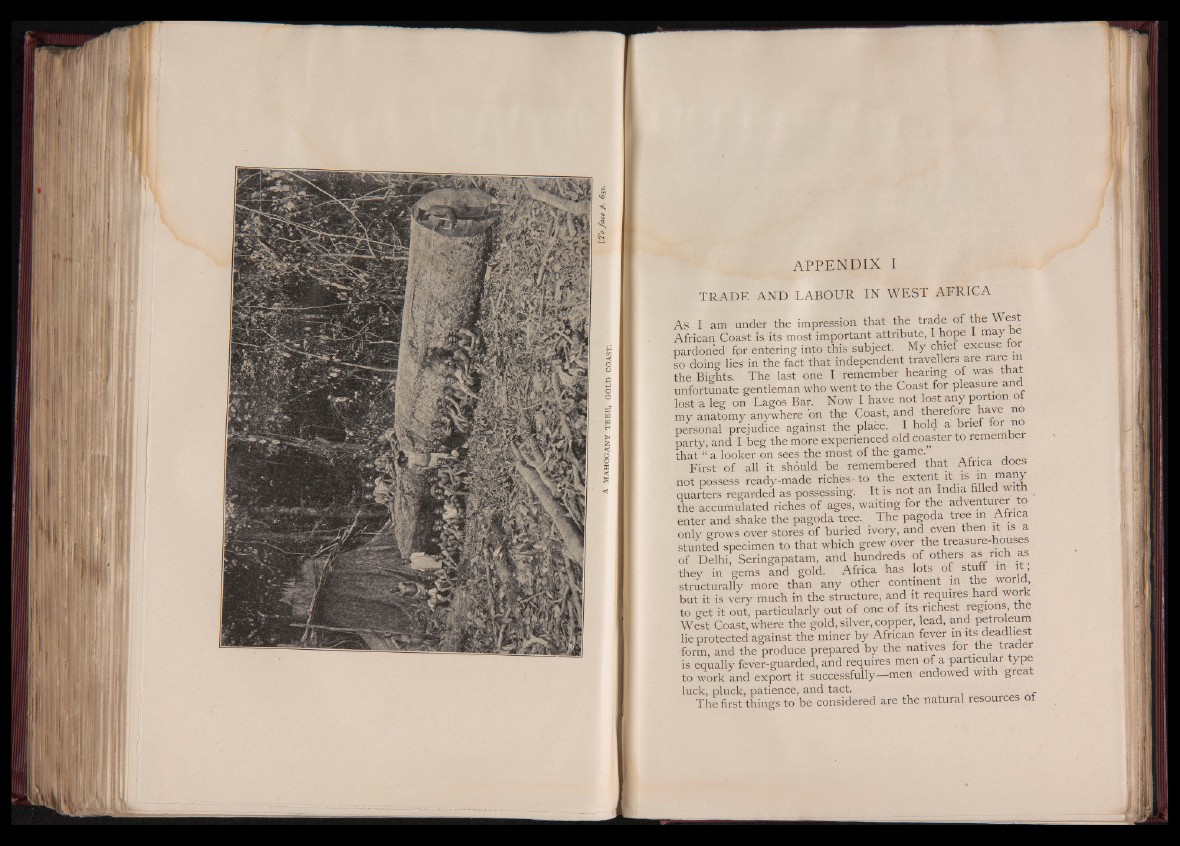
MAHOGANY TREE, GOLD COAST.
APPENDIX I
TR AD E AND LABOUR IN W E ST A FR IC A
As I am under the impression that the trade of the West
African Coast is its most important attribute, I hope 1 may oe
pardoned for entering into this subject. My chief excuse for
so doing lies in the fact that independent travellers are rare in
the Bights. The last one I remember hearing of was that
unfortunate gentleman who went to the Coast for pleasure an
lost a leg on Lagos Bar. Now I have not lost any portion of
my anatomy anywhere bn the Coast, and therefore ave no
personal prejudice against the place. I hold a bne °*,
party, and I beg the more experienced old coaster to rememb
that “ a looker on sees the most of the game. , o
First- of all it should be remembered that Africa does
not possess ready-made riches-to the extent it is in many
quarters regarded as possessing. It is not an india filled wiL
the accumulated riches of ages, waiting for the adventurer to
enter and shake the pagoda tree. The pagoda tree in Africa
only grows over stores of buried ivory, and even then it is a
stunted specimen to that which grew over the treasure-houses
of Delhi, Seringapatam, and hundreds of others as rich as
they in gems and gold. Africa has lots of stuff m f t ,
structurally more than any other continent in the world,
but it is very much in the structure, and it requires hard work
to get it out, particularly out of one of its richest the
West Coast, where the gold, silver, copper, lead, and petroleum
lie protected against the miner by African fever in its deadlie
form, and the produce prepared by the natives for the trader
is equally fever-guarded, and requires men of a particular type
to work and export it successfully— men endowed with great
luck, pluck, patience, and tact.
The first things to be considered are the natural resources of